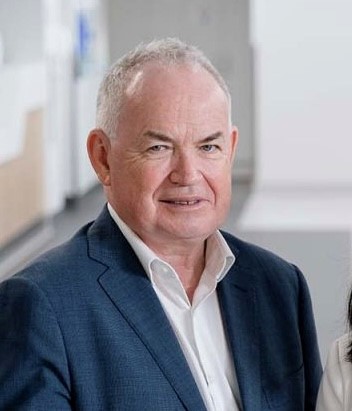2025 | Volume 26 | Issue 1

Dr David Walsh
Dr David Walsh shares his extensive experience and insights on the Australian and New Zealand Audit of Surgical Mortality (ANZASM). From its purpose and benefits to advice for surgeons engaging with the process, he offers a detailed look at how ANZASM fosters reflective practice, enhances surgical outcomes, and supports ongoing professional development.
Read why participation is essential and how surgeons can contribute beyond case audits to support the broader surgical community.
Dr Walsh, tell us about yourself.
I am a South Australian trained general surgeon, with a strong interest in breast and endocrine surgery and surgical oncology. I have a background in public and private practice, and have held many roles within RACS including teaching, assessing and at an executive level.
What is ANZASM?
ANZASM is the overarching body that oversees an audit of patient deaths that occur under the care of a surgeon or following a surgical procedure. It employs a two-tier system of peer assessment to identify potential clinical management and system issues. Feedback is then provided directly to surgeons involved, and more widely in a de-identified form to jurisdictions and the wider surgical community.
What interested you in ANZASM and taking on the SAASM Clinical Director role?
I was the Chair of the South Australian RACS Regional Board (now South Australian State Committee) when the South Australian Audit of Surgical Mortality (SAASM) was first established in 2007. Since then, I have followed SAASM’s progress and development. When the opportunity arose to become the Clinical Director of SAASM, I was keen to be involved.
How can being involved with ANZASM benefit surgeons (both as assessors and treating surgeons)?
The cases in ANZASM allow participating surgeons to understand a wide range of surgical issues, many more than would be encountered in individual practice. It gives surgeons a space to reflect on deficiencies of their practices before they impact patient care. Surgeons can develop strategies for scenarios and complications they are yet to experience. Forewarned is pre-armed. Becoming an ANZASM assessor is an important role in RACS, which most find professionally rewarding. Treating surgeons’ benefit from the feedback and support of surgical peers, particularly when a case has been a significant challenge. Confidentiality and Qualified Privilege provisions make ANZASM a safe space to manage difficult issues.
Should surgeons be worried that they are being asked to fill out an ANZASM SCF for one of their patients?
One of the key aspects to ANZASM surgical case form (SCF) is that surgeons can describe scenarios from their viewpoint and the real-time circumstances encountered. Most cases pass through the ANZASM process without any clinical issues being flagged. All data in SCFs add to the body of information about shortcomings, required resources, and future challenges, which we can feed back to healthcare jurisdictions.
What advice would you offer a surgeon looking to fill in an SCF in an efficient and effective manner?
Most times the core of an SCF is the free text response in Question 9 (describing the course to death). My advice is to outline a logical account of the patient’s journey. It doesn’t need to be overly long and burdened with detail. It does need to address telling clinical features, key strategic movements, address unusual or unique aspects, and when appropriate reflect on adequacy of care. If it doesn’t make sense, then assessors will feel more obliged to request a full case note review or raise a clinical management issue.
How does timely reporting and case submission impact the audit?
Recency is everything. With ANZASM cases we strive to have the SCFs in the hands of treating surgeons as soon as possible. This allows responding surgeons to have the facts and nuances of a case at the front of the mind. Locating and reviewing older hospital case notes—even the delegation of a case to others—always leads to delays. The sooner ANZASM has a completed SCF, the quicker a case can be assessed, closed and feedback provided.
Is it compulsory to complete ANZASM cases?
Participation in ANZASM is a compulsory part of CPD for all surgeons operating under the auspices of Ahpra. This is regardless of their chosen CDP home. Excessive and unexplained outstanding ANZASM SCFs could be interpreted by Ahpra as CPD non-compliance and a breach of medical registration. These interpretations would be made independent of SAASM/ANZASM/RACS.
Where does the feedback go and who is it shared with?
Confidential, specific case feedback is received by every surgeon who completes an SCF. Any clinical management issues will be specified, usually with a brief commentary. This is backed up with an individual surgeon annual report. De-identified and largely overview feedback is provided to stakeholders including departments of health and local health networks. This information is also published in the SAASM and ANZASM annual reports. Specific de-identified cases are used as example clinical lessons, and published by ANZASM in case note reports such as the Case Note Review booklet and Case of the Month.
How can surgeons get involved outside of having a case audited?
We would love to have a broad pool of assessors across all states and specialities – both for the briefer first line assessments or the more in-depth second line assessments. All such involvement is used as evidence of CPD by RACS. More importantly, ANZASM assessments are a convenient way to support the work of all RACS Fellows. I also suggest participating in the popular webinar programs offered by each ANZASM audit region.